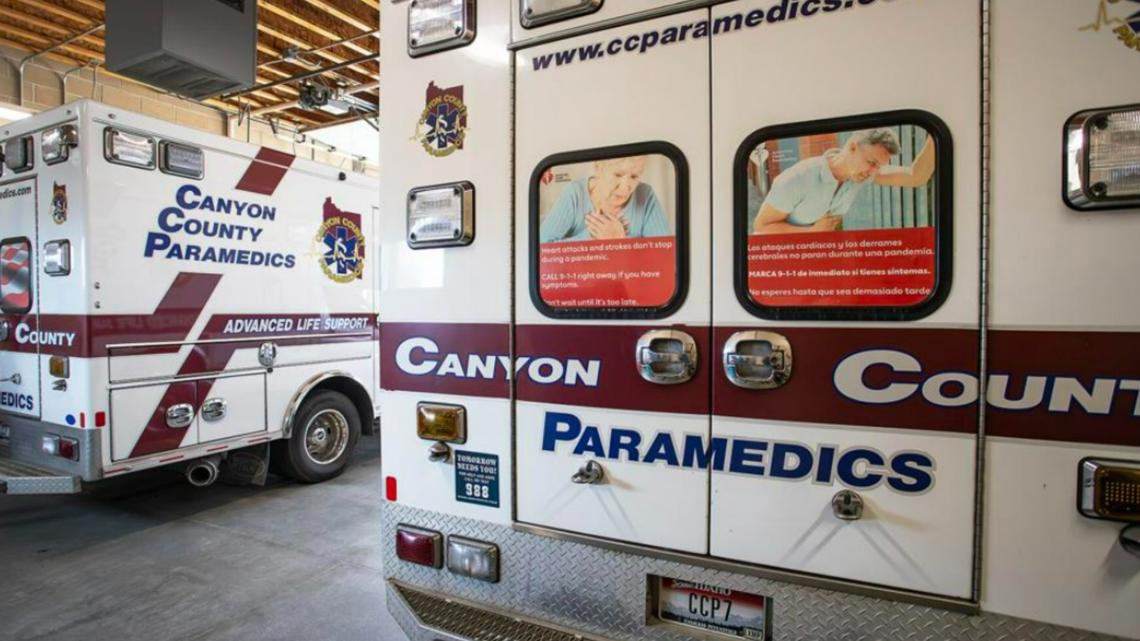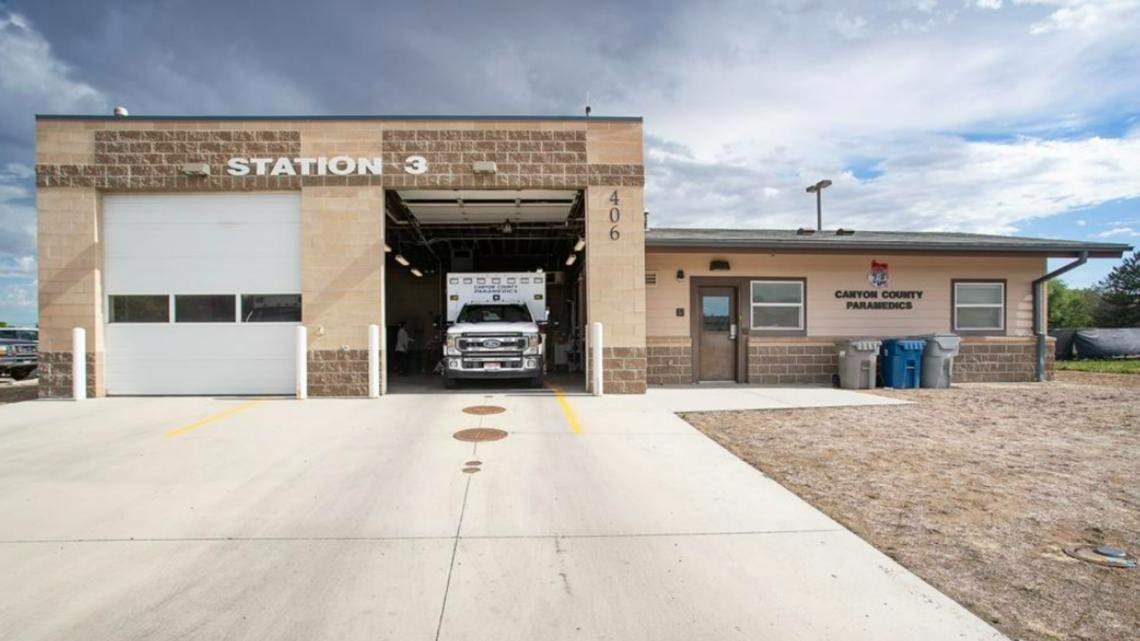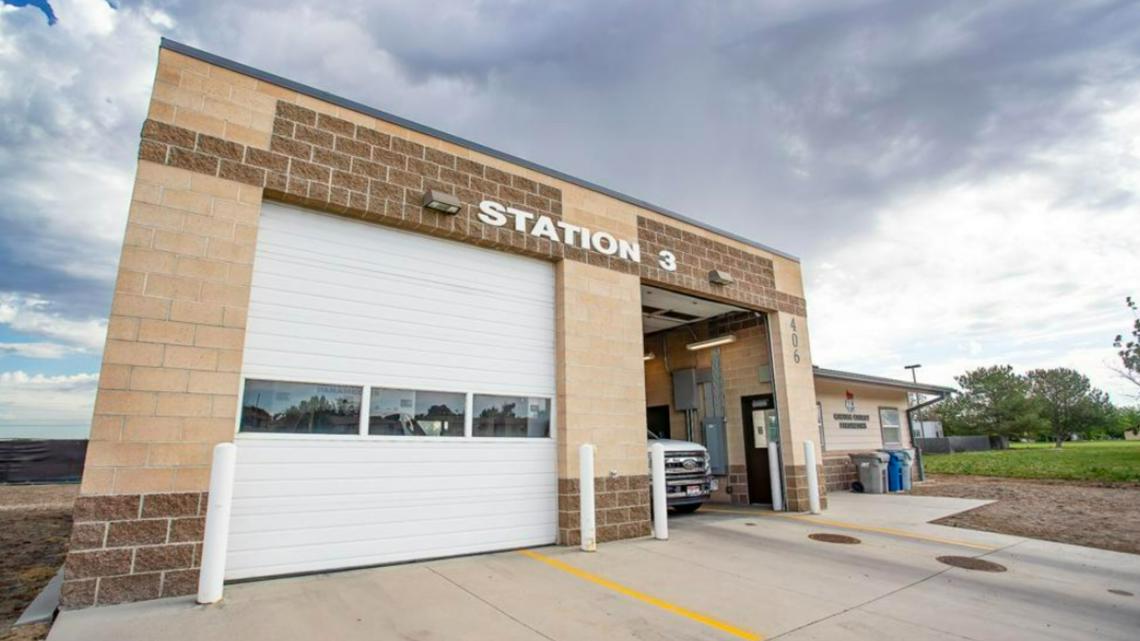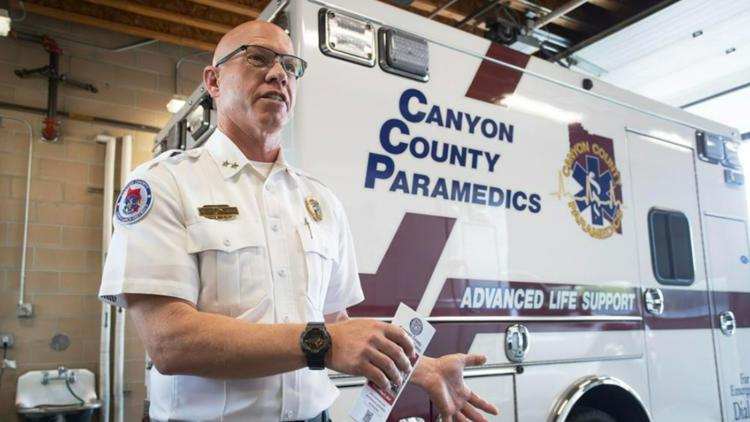NAMPA, Idaho — This article originally appeared in the Idaho Press.
The Canyon County Ambulance District has a problem that's only getting worse with time.
And after a levy failed to pass during the May primary election, the district is scrambling to evaluate its future.
The district needs a new station, more space, and more resources as the county's population ages and grows, according to the district's chief Michael Stowell. Its $8 million levy was soundly defeated in May, leaving the system strained and options dwindling.
While the levy needed a supermajority vote of two-thirds to pass, it received just a 41% vote in support.
“We put a lot of effort into getting out to the public,” said Stowell, who has been with the Canyon County paramedics since 2004. “So if it would have passed, I wouldn't have been shocked.”
The levy would have provided funds for 12 additional staff, two new ambulances, construction of a new Caldwell station and the replacement of Nampa Station 41.
Stowell said he knows the levy’s failure isn’t personal, as several school, city and fire items did not pass in the May election.
The levy would have raised taxes by $21.19 per $100,000 of assessed value.
The district plans to come back in the November general election and ask for less funds. If the November levy passes, the soonest the district will see money is 2026.
NAMPA STATION 41
Canyon County Ambulance District’s Station 41 sits on a bulldozed lot, the only structure on the dirt field. While it is the second-busiest location within the county, the district doesn’t own it.
The station was previously shared with the district by Saint Alphonsus, which purchased the former Mercy Medical Center. In 2019, Saint Alphonsus announced the center’s demolition and has since sold it to Pedcor Companies, as reported by BoiseDev. The company plans to build apartments on the lot, making it a matter of time until Station 41 is no more.
“If they said, ‘move out today,’ we would be scrambling,” Stowell said.


Stowell said the company has worked to allow them to stay as long as needed. Though, May’s levy was meant to fund a new station so Station 41 could be vacated.
“We would want to be completely out of this and in (our own) station before you have that, like, ‘hey guys, you got three months to move out,’” Stowell said.
Station 41 is the most-southern station in Nampa. It's a modest size, with two ambulance bays.
For 24-hour shifts, medics stay in an attached living space, with two bedrooms and a tight kitchen. If a third person works that shift, Stowell said they have to sleep on a recliner.
In his time working within the ambulance district, not much has improved, he said. Instead, progress feels stagnant, which can be hard on staff morale.
Of the district's several stations, three are cohousing situations where medics are working out of a fire department station.
Stowell said it would be ideal for the district to be able to build its own stations, and place them in accordance with getting the best response times.
SHORT-STAFFED STATIONS
For a station to be open, there has to be a minimum of two paramedics on staff.
According to Stowell, it’s not uncommon for a station or two to be closed depending on the day.
“That's the kind of thing we're doing due to staffing and funding,” he said. “If we have the funding we would be able to pay more compensation; we could recruit and retain.”
According to Aaron Williams, Canyon County constituent services director, the ambulance district currently has four vacancies. Instead of onboarding staff and drawing from its fund balance for wages, the district will not be filling these positions.
Williams said that the district had drawn $400,000 from these reserve funds for staffing in 2024, but does not want to drain the balance.
“We're going to reach a time where (the district) expunges all the money in that account,” he said. “So then, we're going to be, basically, hung out to dry.”


Williams worked with the ambulance district during the process of running the levy. Had the levy passed, the four positions would have remained with the addition of 12 new staff as well.
With a shortage of staff, depending on the day, a station or two will be closed.
“The reason for this levy that was being pushed was because it would allow for those stations to not be shut down,” Williams said. “It’s kind of scary in that aspect.”
The ambulance district's team of less than 70 serves the entirety of Canyon’s population. According to the 2022 U.S. Census, Canyon County has a population of 251,065.
A STRAINED SYSTEM
Ambulance districts are not a part of the county, Stowell explained. While the ambulance district works within the boundaries of the county, it doesn’t receive the same funding police and fire do.
“We were always behind on the number of units we should have had on duty, the number of stations we should have,” Stowell said. “We just never have had the funding to keep up with the growth, and so we're always a little bit behind.”
In the past five years, Canyon County paramedics have seen a 20% increase in emergency calls.
Williams said the funding model for the ambulance district presents a significant challenge, particularly when considering the county’s growth.
Unlike other entities that are 100% tax-funded, Idaho ambulance districts receive a limited amount. The Canyon County Ambulance District receives about 30% of its funding from taxes.
The other 70% is intended to come from patients paying for services. When an ambulance is used, patients are charged for the service.
However, when it comes to those on Medicare or Medicaid, costs are only partially covered and the ambulance district receives less money.
“I wouldn’t say we’re losing money, but it doesn’t (cover) the cost of service from where we’re initially starting,” Williams said.


The cost of equipment doesn't help. An empty ambulance normally costs $260,000 before medical supplies. With supplies, a fully-stocked ambulance is $500,000 according to Stowell.
Canyon’s average response time is 8 minutes and 54 seconds, almost a minute longer than the national average response time.
“When you talk about time-sensitive emergencies, that's heart attack, stroke and major trauma,” Stowell explained. “Those we’re trying to reduce response times, and if our response time is going up, that affects patient outcome.”
According to the ambulance district’s website, Canyon County paramedics’ response time has increased by one minute over the last four years.
Canyon’s ambulance district covers some rural areas that are farther out. With increased wait times, situations can become more dire for isolated residents.
“Minutes are critical, seconds are critical,” Williams said. “To get a person from on-scene to the hospital is vital to whether they live or die.”
NAVIGATING THE BUDGET
Steve Onofrei, senior systems analyst for the county, explained that the amount the ambulance district can pull from property taxes is fixed.
Each year, the Canyon County Board of Commissioners can increase the amount of money the district receives from property taxes, but they are limited to a 3% raise.
The ambulance district receives the smallest portion out of property taxes collected by the county. For every $100,000 in taxable assets, the district receives $16, Onofrei said.
“That's not enough, and so the only way to get more is to have two-thirds of the voters say, ‘we give you permission,’” County Clerk Rick Hogaboam said.
The ambulance district override levy isn’t the only initiative to fail in the May elections. Multiple other levies and bonds did not achieve the support needed to pass.
“I think residents here are feeling economic anxiety,” Hogaboam said about the lack of support.
According to Hogaboam and Onofrei, property taxes have stabilized since 2021 with HB 389 — a controversial bill that provided property tax relief for residents and limited local taxing districts' abilities to increase their budgets. While rising property values contribute to households paying more individually, the tax rate itself may have remained flat.
“In the last five years, so much has changed legislatively, and it's hard to keep up with all the nuances with property tax,” Onofrei said. “I mean, a general statement this year wouldn't be true three years ago.”
This article originally appeared in the Idaho Press, read more on IdahoPress.com.
Watch more Local News:
See the latest news from around the Treasure Valley and the Gem State in our YouTube playlist:
HERE ARE MORE WAYS TO GET NEWS FROM KTVB:
Download the KTVB News Mobile App
Apple iOS: Click here to download
Google Play: Click here to download
Watch news reports for FREE on YouTube: KTVB YouTube channel
Stream Live for FREE on ROKU: Add the channel from the ROKU store or by searching 'KTVB'.
Stream Live for FREE on FIRE TV: Search ‘KTVB’ and click ‘Get’ to download.



